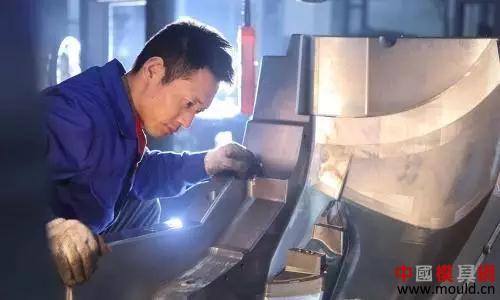
Frequently Asked Questions in Trial Mode 1: Main Sprue Sticking Mode
The method and sequence of solving the problem:
1 Polish the main sprue → 2 nozzles coincide with the center of the mold → 3 Reduce the mold temperature 4 Shorten the injection time → 5 Increase the cooling time → 6 Check the nozzle heating ring → 7 Polish the mold surface → 8 Check the material for contamination.
Frequently Asked Questions in Test Mode 2: Difficulties in Mold Release
The method and sequence of solving the problem:
1 Decrease the injection pressure → 2 Shorten the injection time → 3 Increase the cooling time → 4 Reduce the mold temperature → 5 Polish the surface of the mold → 6 Increase the stripping slope → 7 Reduce the clearance at the insert
Common Problems in Trial Mode 3: Poor Dimensional Stability
The method and sequence of solving the problem:
1 Change barrel temperature → 2 increase injection time → 3 increase injection pressure → 4 change screw back pressure → 5 increase mold temperature → 6 decrease mold temperature → 7 adjust feed amount → 8 decrease feed rate
Frequently Asked Questions in Test Mode 4: Surface Ripples
The method and sequence of solving the problem:
1Adjust the feed amount→2 increase the mold temperature→3 increase the injection time→4 increase the injection pressure→5 increase the material temperature→6 increase the injection speed→7 increase the size of the runner and gate
Frequently Asked Questions in Test Mode 5: Warpage and Deformation of Plastic Parts
The method and sequence of solving the problem:
1 Decrease mold → 2 Lower material temperature → 3 Increase cooling time → 4 Reduce injection speed → 5 Reduce injection pressure → 6 Increase screw back pressure → 7 Reduce injection time
Frequently Asked Questions in Trial Model 6: Delamination of Plastic Parts
The method and sequence of solving the problem:
1 Check the type and grade of plastics → 2 Check whether the material is contaminated → 3 raise the mold temperature → 4 Dry the material → 5 Increase the material temperature → 6 Decrease the injection speed → 7 Decrease the gate length → 8 Decrease the injection pressure → 9 Change the gate Position→10 Large-hole nozzle
Common Problems in Trial Mode 7: Silver Stripe Squeeze Stick
The method and sequence of solving the problem:
1 Reduce the temperature of the material → 2 Dry the material → 3 Increase the injection pressure → 4 Increase the size of the gate → 5 Check the type and grade of the plastic → 6 Check whether the plastic is contaminated
Frequently Asked Questions in Test Mode 8: Difference in Surface Luster
The method and sequence of solving the problem:
1 Material drying → 2 Check whether the material is contaminated → 3 Increase the material temperature → 4 Increase the injection pressure → 5 Increase the mold temperature → 6 Polish the mold surface → 7 Increase the size of the runner and gate
Frequently Asked Questions 9: Dent
The method and sequence of solving the problem:
1 Adjust the feed amount → 2 increase the injection pressure → 3 increase the injection time → 4 reduce the material speed → 5 reduce the mold temperature → 6 increase the exhaust hole → 7 increase the size of the runner and gate → 8 shorten the length of the runner → 9 Change the position of the gate →10 Decrease the injection pressure →11 Increase the screw back pressure
FAQ 10: Bubbles
The method and sequence of solving the problem:
1 Drying of material → 2 Decrease the temperature of the material → 3 Increase the injection pressure → 4 Increase the injection time → 5 Increase the mold temperature → 6 Reduce the injection speed → 7 Increase the screw back pressure
T-ceiling Light Keel Roll Forming Machine is a new building material, it widely used for hotels, terminals, railway stations, playgrounds, supermarkets, factories, office buildings, interior decoration and other places set. It has light weight, high strength, adapt waterproof, shockproof, dust, noise, sound-absorbing, temperature and so on.
Specifications:
Raw material
PPGI, GI, Aluminum coils
Material thickness range
0.2-0.5mm
Forming speed
0-40m/min(include punching)
Rollers
12 rows
Material of forming rollers
45# steel with chromed
Shaft diameter and material
40mm, material is Cr12
Controlling system
PLC
Material of cutting blade
Cr12 mould steel with quenched treatment
Voltage
380V/3Phase/50Hz or at your requirement
Main motor power
7.5KW
Hydraulic atation power
5.5KW
Way of driven
Gear
Working process:

Decoiler - Feeding guide - Main roll forming machine - PLC control system - Servo tracking cutting - Feeding paut for punch - auto punch machine - punch PLC control system - Receiving table
Pictures of machine:
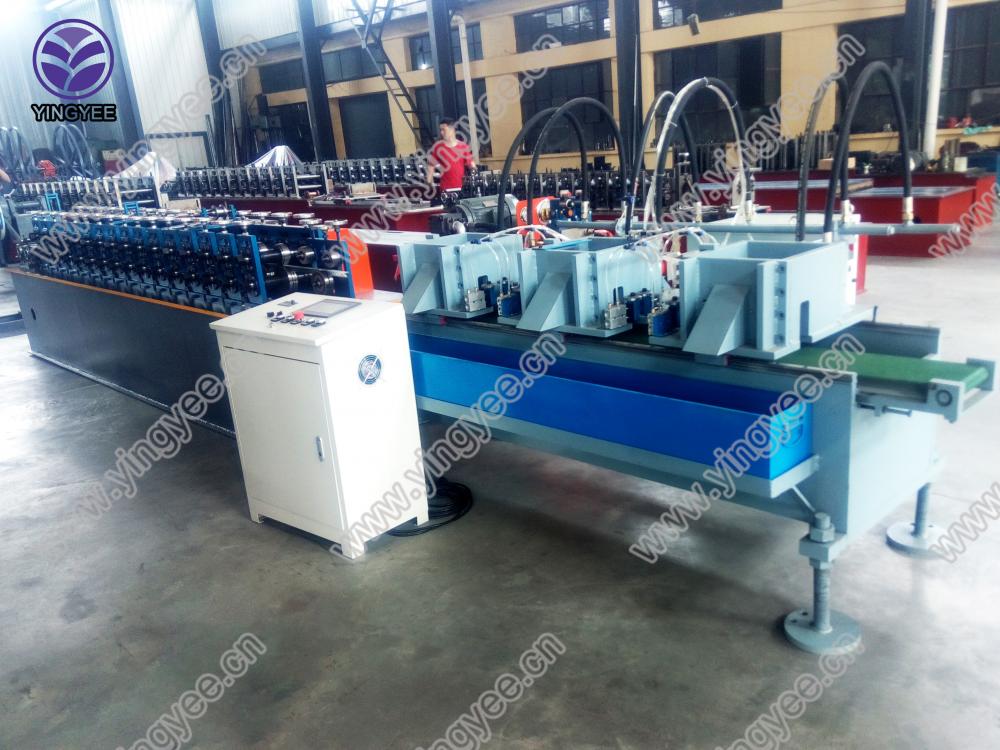
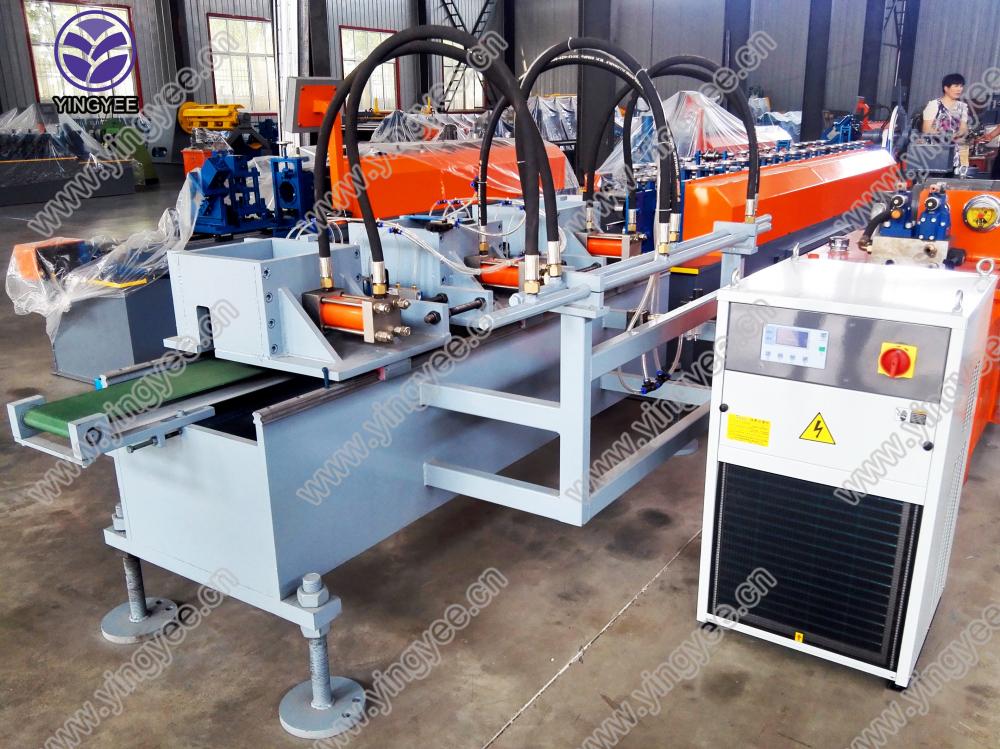
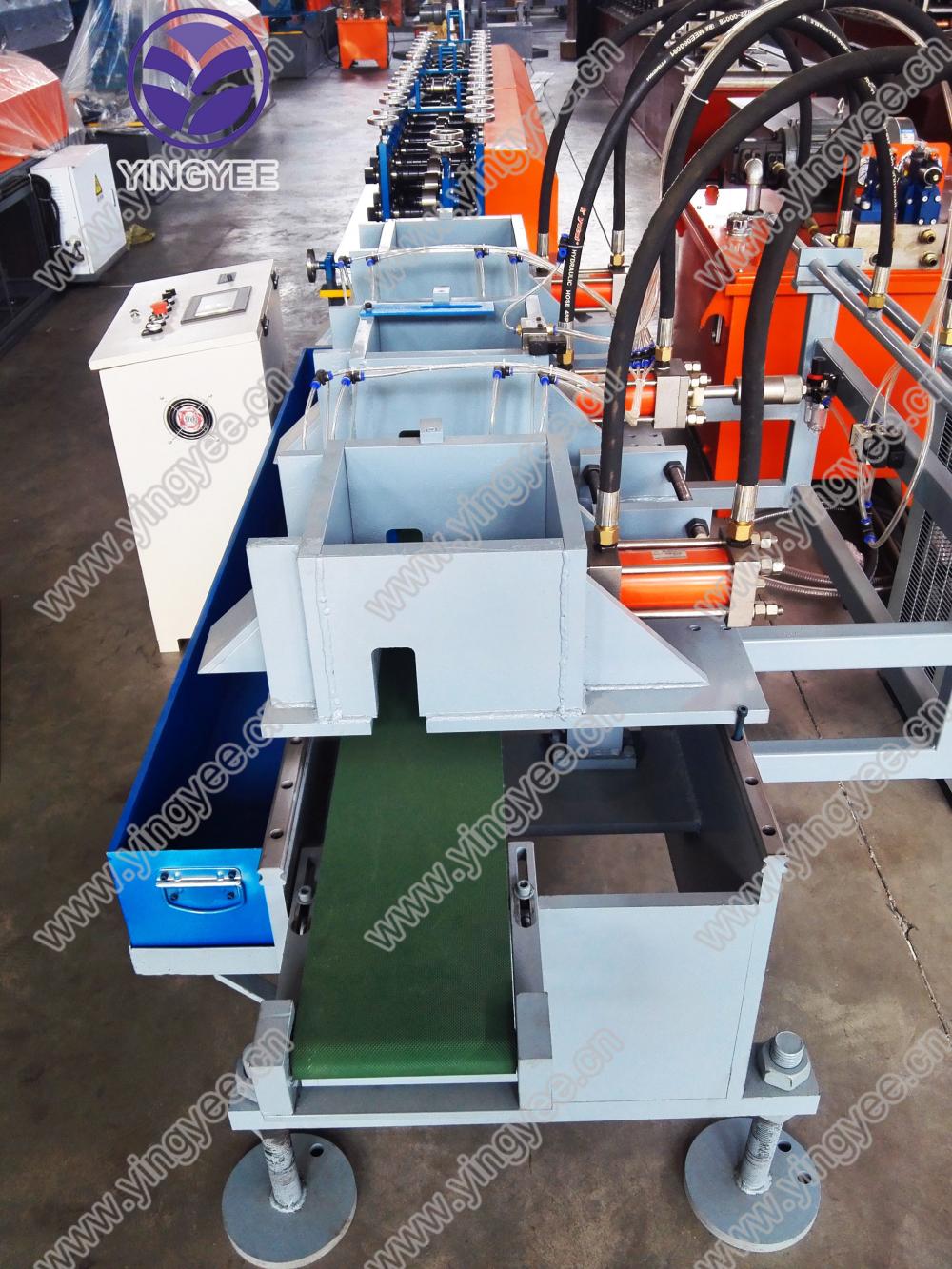
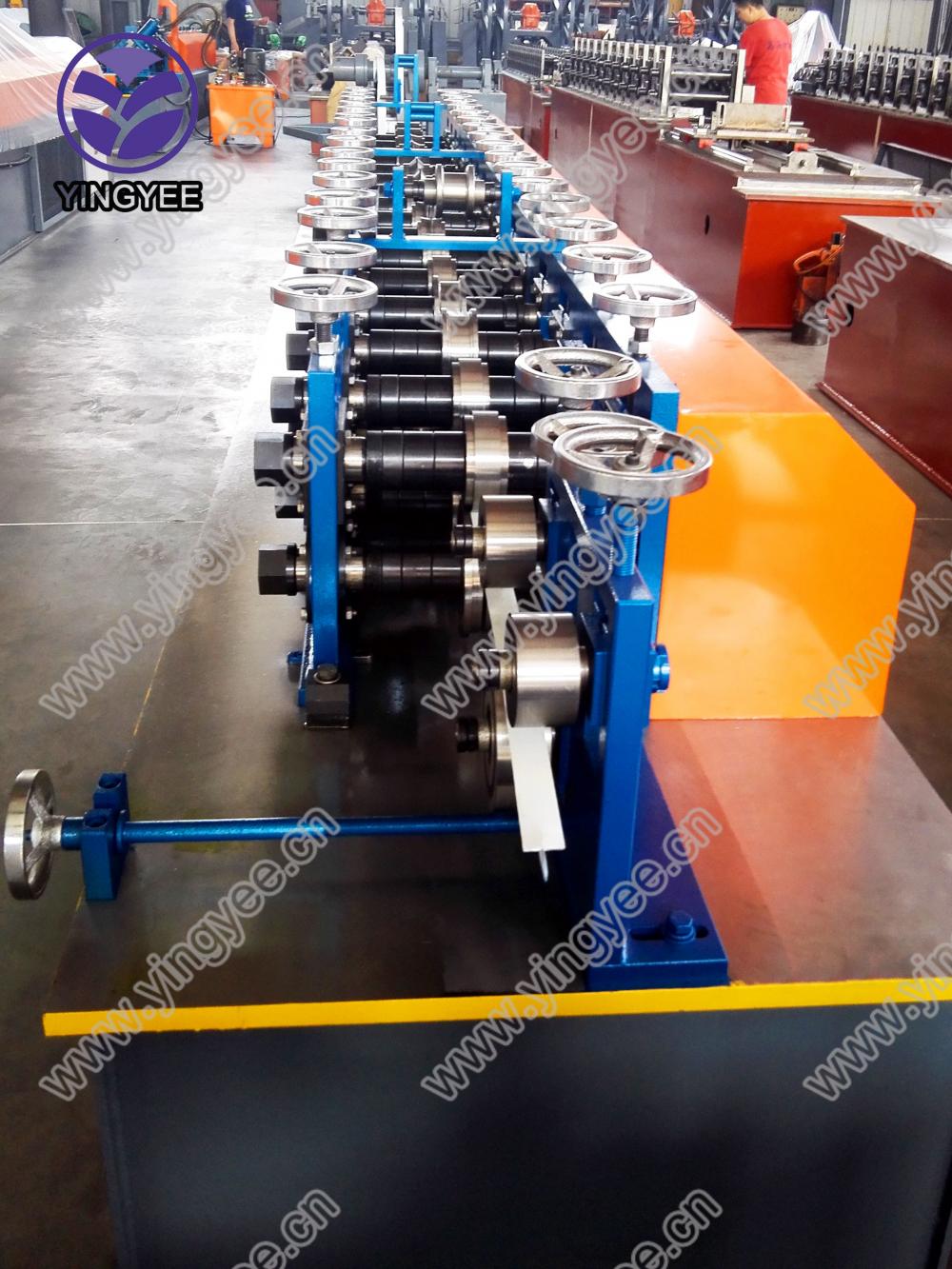
Training and Installation :
1. We offer installation service local in paid, reasonable charge.
2. QT test is welcome and professional.
3. manual and using guide is optional if no visiting and no installation.
Certification and after service:
1. Match the technology standard, ISO producing certification
2. CE certification
3. 12 months warranty since the delivery. Board.
Our advantages:
1. Short delivery period.
2. Effective communication
3. Interface customized.
Ceiling Light Keel Forming Machine
Ceiling Light Keel Forming Machine,Ceiling Cold Roll Forming Machine,T Grid Ceiling Forming Machine,Single Layer Ceiling Light Forming Machine
YingYee Machinery and Technology Service Co.,Ltd , https://www.yingyee.cn
![<?echo $_SERVER['SERVER_NAME'];?>](/template/twentyseventeen/skin/images/header.jpg)